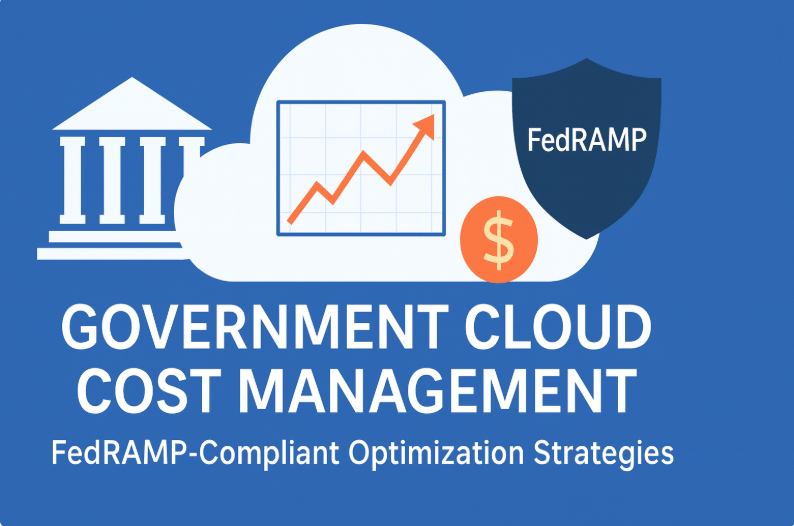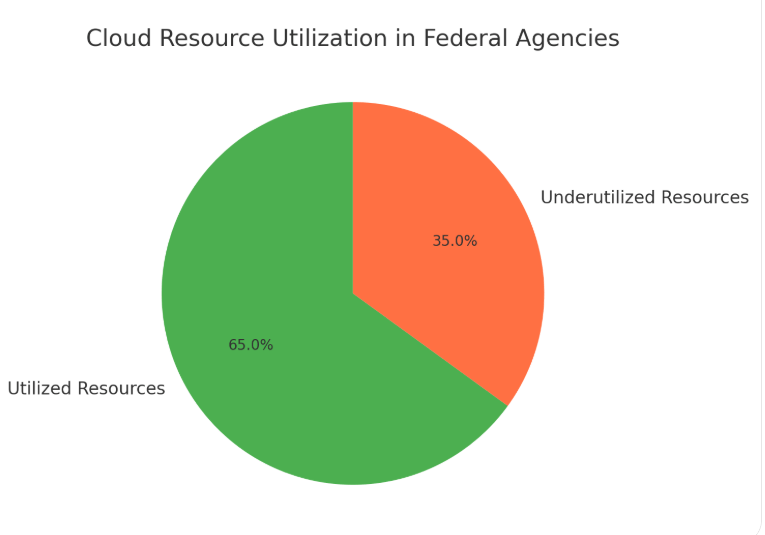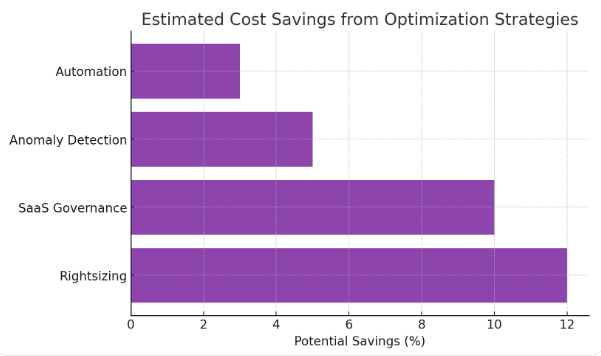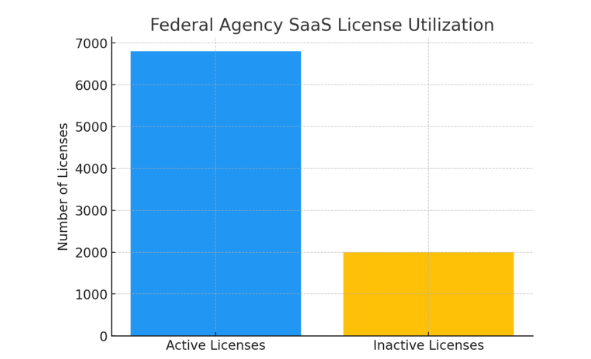
The U.S. federal government, state agencies, and their contractors are accelerating digital transformation initiatives, and the cloud is central to this shift. By migrating workloads to AWS GovCloud, Microsoft Azure Government, Google Cloud Assured Workloads, and other FedRAMP-certified platforms, agencies aim to boost agility, scalability, and resilience. At the same time, citizens increasingly expect faster and more reliable digital services, making cloud adoption essential for maintaining public trust.
But with these benefits comes the challenge of cost. Cloud services can quickly spiral out of control without proper oversight, especially in large-scale government environments. Unlike private companies that can pivot spending more flexibly, agencies must operate within rigid budget cycles and justify every dollar spent to taxpayers and oversight bodies. To complicate matters, all cloud spending must align with the Federal Risk and Authorization Management Program (FedRAMP), which enforces strict compliance standards.
This article provides an in-depth guide on how agencies can implement FedRAMP-compliant cost optimization strategies, ensuring financial responsibility without compromising on compliance or mission delivery.
The Role of FedRAMP in Government Cloud Adoption
Established in 2011, FedRAMP creates a uniform approach to assessing, authorizing, and monitoring cloud service providers used by federal agencies. Its framework saves agencies time and resources by providing standardized security requirements while ensuring sensitive federal data remains secure.
However, FedRAMP also affects cost management in key ways:
- Limited Vendor Pool: Agencies can only contract FedRAMP-authorized providers, narrowing choices but increasing assurance.
- Security Monitoring Costs: Continuous monitoring requirements mean agencies must budget for audits, vulnerability assessments, and incident response.
- Operational Burden: Agencies are responsible for portions of the shared responsibility model — particularly cost oversight, governance, and user access.
For example, when adopting a cloud management strategy, agencies must consider not just technical outcomes but also financial alignment. Binadox outlines practical ways to build an effective cloud management strategy that balances visibility, security, and cost efficiency.
Key Challenges in Government Cloud Spending
1. Multi-Cloud Complexity
Most agencies use more than one cloud provider to reduce vendor lock-in or meet mission-specific requirements. A defense agency, for instance, may run sensitive workloads in AWS GovCloud while leveraging Azure Government for collaboration tools. This creates fragmented billing structures and makes consolidated cost reporting difficult.
2. Siloed Procurement
Government departments often buy SaaS licenses independently. One agency might maintain three separate Salesforce Government Cloud contracts without central oversight, leading to redundant spending.
3. Budget Rigidity
Government financial planning is conducted annually or biannually, with limited flexibility to adjust mid-year. If unexpected costs emerge — say from a cyber incident requiring extra storage — agencies cannot easily shift funds.
4. Compliance Overhead
FedRAMP requires additional spending on reporting and monitoring. This compliance burden can consume up to 20% of total cloud program costs, adding a financial layer to security.
5. Hidden Waste
Idle instances, unused SaaS subscriptions, and over-provisioned workloads represent waste. A 2023 Government Accountability Office (GAO) report found that many agencies had 30–40% of cloud resources underutilized, highlighting the urgent need for rightsizing.

FedRAMP-Compliant Cost Optimization Framework
To manage costs effectively under FedRAMP, agencies should adopt a structured optimization framework integrating visibility, automation, and compliance.
Visibility and Transparency
Without centralized visibility, agencies face fragmented oversight. Platforms like Binadox unify multi-cloud and SaaS data into dashboards, reports, and cost allocation views, enabling CIOs and CFOs to see exactly where taxpayer money is going. These practices align with cloud cost optimization best practices, helping agencies prevent overspending.
Rightsizing Government Workloads
Rightsizing is vital in government workloads that must run continuously — such as disaster response systems or healthcare platforms. Binadox’s optimization tools highlight underutilized resources and provide actionable recommendations. Their approach to dealing with underutilized instances ensures agencies pay only for what they use.
SaaS License Governance
Agencies rely heavily on SaaS for productivity, communication, and case management. Yet unused licenses remain a major budget drain. For instance, a federal health agency discovered it was paying for 2,000 unused Office 365 GCC licenses, costing nearly $1 million annually. Tools like Binadox’s Renewals Calendar and License Manager enforce governance, in line with proven SaaS subscription management strategies.
Anomaly Detection
FedRAMP emphasizes continuous monitoring, and anomaly detection is its financial counterpart. Sudden spikes — caused by misconfigured storage buckets, unauthorized workloads, or data transfer overages — must be flagged instantly. Binadox automates this through proactive alerts, supporting cloud cost anomaly detection.
Policy-Driven Automation
Automation reduces manual oversight and enforces compliance. For example, a Department of Energy project set rules to automatically shut down research workloads after hours, cutting compute costs by 25%. Policy-driven automation also ensures repeatability — a FedRAMP best practice.
Centralized Procurement
Central procurement prevents redundant contracts, improves vendor negotiation power, and aligns with federal acquisition rules. This approach ties closely to FinOps, the emerging discipline that unites finance, operations, and IT. Binadox explores the link between FinOps and compliance in FinOps in cloud computing.

Case Example: SaaS Spending in Federal Agencies
A federal agency with 80+ SaaS applications lacked visibility into license usage. A review found:
- 15% of licenses inactive for over 6 months
- Duplicate contracts for project management tools across departments
- SaaS renewals missed due to siloed ownership
By adopting a centralized management approach:
- Redundant apps were consolidated into one enterprise contract.
- Binadox’s License Manager automated renewals.
- Underutilized licenses were reassigned to active users.
The outcome: a 30% reduction in annual SaaS costs, freeing up millions of taxpayer dollars.

Emerging Trends in Government Cloud Optimization
AI and Predictive Analytics
AI enhances monitoring by predicting cloud usage and identifying risks before they occur. Predictive budgeting helps agencies avoid mid-year overruns while strengthening oversight.
Government-Tailored SaaS Solutions
Vertical-specific SaaS — such as justice case management or telehealth platforms — is on the rise. These must be tightly managed to balance compliance and cost.
Edge Computing for Mission-Critical Operations
Edge computing supports real-time decision-making in defense, transportation, and emergency response. This creates hybrid cost structures, where part of the workload is on the edge and part in FedRAMP-certified cloud environments.
Infrastructure as Code (IaC) for Compliance and Cost
Agencies increasingly use Terraform for IaC. Tools like Binadox’s IaC Cost Tracker help forecast costs before deployment and ensure code complies with both budget and FedRAMP requirements.
Shared Responsibility and Cost Accountability
FedRAMP relies on a shared responsibility model:
- Providers secure the infrastructure and maintain compliance.
- Agencies manage data, users, and cost controls.
In practice, this means agencies remain responsible for budgeting, license management, and anomaly monitoring. Binadox’s guidance on the shared responsibility model illustrates how costs and compliance duties are divided.
Aligning FedRAMP Compliance with FinOps Practices
FinOps is gaining traction in government IT as agencies balance budgets with modernization. Key practices include:
- Cross-Functional Teams: Finance, operations, and IT jointly review spend.
- Cost Allocation: Tagging resources by mission, department, or program ensures accountability.
- Budget Forecasting: Teams use data-driven insights to plan for next year’s appropriations.
This alignment strengthens both compliance and financial governance.
Improving Government Cloud Cost Management with Binadox
Binadox offers a comprehensive platform for agencies to unify SaaS and cloud cost oversight:
- Unified Visibility: View AWS GovCloud, Azure Government, and SaaS costs in one dashboard.
- Rightsizing: Automated optimization prevents wasteful spending.
- Anomaly Alerts: Continuous monitoring aligns with FedRAMP reporting standards.
- License Manager: Automates renewals and eliminates abandoned licenses.
- Policy Automation: Enforces consistent cost-saving rules.
By implementing these tools, agencies can cut waste by up to 30%, remain compliant, and reallocate funds toward mission priorities.
Conclusion
Government cloud adoption is essential for modernization, but cost efficiency cannot be sacrificed for progress. FedRAMP ensures that cloud solutions meet rigorous security requirements, yet it also introduces compliance-driven costs. By embracing centralized visibility, anomaly detection, SaaS governance, and policy automation, agencies can align cloud cost management with FedRAMP compliance.
Platforms like Binadox turn compliance into a financial advantage, enabling smarter spending, stronger oversight, and more efficient use of taxpayer funds. By adopting these strategies, agencies not only save costs but also reinforce trust in public digital services.

